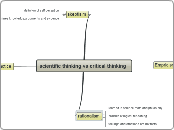2D to 3D (Marr vs. Biederman)
Why is 3D a progress
Feature Detection
A strucural description would not recog a rotated "L"
Template Aproach
One single template cannnot match all variations
Object Recongnition: 5 Stages: Humphreys & Bruce
Naming
Semantic classification
Structural Classification
Viewpoint Depenent Object Descriptions: 2,5D
Early visual Processing: Raw primal to Full Primal
Differences
Common
Conclusion: Recogntion not completely reliant upon object -centered regogn. also viewpoint dependent regog.
Problems
Neurological and Eperimental Evidence: General Problem with novel viewpoints
Both describe between category description
Both perceptual classification, not this is an aminal
Having trouble within category: How Faces?
Not well specified how 2D to 3D
Both match 3D rep
Both start with 2D reprensentation
Only cylinders
Locate Axis from Contour Genrator
Evidence: Problems when axis wasd obscured (Humphreys & Riddoch)
Locate Components
By find inward anglex (concavities)
Biedermann
36 Geons
blocks
spheres
Wedges
cylinders
locate key features / thus geons (non aacidental properties) from contour
Evidence: (Biederman) Problems if non accidental are disrupted
parallelity
Problem with frontal whee
curvilinarity
Why?: All geons have certain non-variant properties
Marrs 3D
Classification
How sematic classification?
How naming?
how withing category?
Texture not important
Ignores Role of Colour factilitates Recogntion
Ignores Role of Context facitlitates Recognition
Planar assumption: Problems with Octagon vs. Cube
Limited shapes like animals
Catalogue not explained
Recognition as pasive
Does not explain how / if its implemented in the brain
Humphreys & Riddoch: Similar Patients: Critical features no/ Forshortened Axis yes
Thats why axis is important for 3D
Warrington and Taylorgical: Neurological Patients problems w. untypical view (critical features hidden)
Lawson and Humphreys: Rotation no Effect unless Axis forshortened
How?
Matching 3D object with catalog
Hierarchical comparison: Bcasic Shape (Biped vs. quadruped), number , organization of limbs, next human or ape
3. Determine principal Axis for all parts
relation Axis sizes important for distingusihing gorillas from humans
2. Locate areas of sharp concavity to divide parts
Concavities are important contour points (lips, forehead, chin)
1st. Starting point silloutte from viewpoint depeentent object description
to convert to 3D make assumtions: Closeness, Planarity
He calls the 2D sillouette a contour generator for to the objects (3D) contour
Build a cannoical coordinate frame (wire frame)
Assumption all is cylindrical
Viewpoint independent
Marrs 2D
Ignores context
context Importatnt
Ignores Colour
Evidence
Depth cues are processed seperately
4. 2,5 D Sketch: Integrate distance vectors from motor texture cues, stereopis
Viewpoint dependent
3. Full Primal Sktech
Gestalt Grouping Principles
(Assigning Tokens)
2. Raw primal sketch: Detection of light intensity changes includeing edges, boundaries, blobs, Bars
=Edge extraction
Blurring to eleiminate lighting effects
1. Greyscale description
Marrs 3 Assuptions
Brain: implementation
Algorithms: How to operationalize processes
Prozesses: What vision has to accomplish
Biederman
Marr
locate primary axis
locate components by
Critique
Bulthoff and Edelmann: Complex objects in Novel viewpoints problematic even when 3D description possible
Problems with certain shapes: "Wheel" from front
Generally: Even if all geons could be identified we have problems
EVIDENCE
Recognition Priming: But only when viewpoints < 135 degr. and no geons were hidden
Relying on conavity to seperate geons
Biedernan: Deleting non-accidental prop. led to problems in recognition
HOW?
Advandage: Geons immediately turned into 3D
Choosing by comparing non accidental properties
36 Geons= Shapes
Segmenting by concavities
Determining Invariant= non accidental properties
Probably more than a sinlge way how objects are recognized
Context and surface detail are probably important as well i.e. colour helps recognition and distinction
In within category disinctions a wealth of info would be lost - Two collies would look the same
No conclusive evidence for object centered description: --> Probably we also depend on viewpoint centered description
Both explanations have limitatinos and cant explain all shapes and how we discriminate within categorical differences
Neither theory specifies how how the matching is done
Why 3D: Otherwise we'd have to store several views per object









